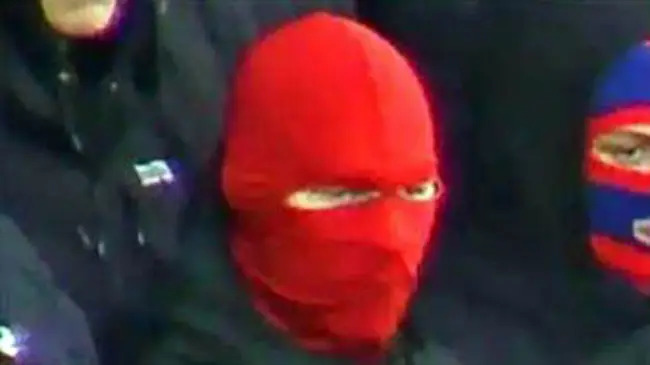Balaclava, a headgear piece designed to only expose specific parts of the face. Popular among groups whose members prefer to keep their identities under the radar, balaclava comes in different styles and ways it is worn. Born from the military, the second-skin garment’s “dangerous” identity is under threat.
Military History
Balaclava’s military history can be traced back to the 19th century, specifically the Ukrainian port town of Balaclava near Sevastopol where the Battle of Balaclava during the Crimean War took place. British troops were sent to fight Russian soldiers in a condition they did not master well, freezing. Arriving with only their worn-out summer uniform and the fact that their supplies never arrived in time, the UK soldiers’ morale was undoubtedly at its lowest. As the devastating news from the battlefield reached the UK, British women then began knitting full-face hats, covering the top and lower portion of the head, and shipped them to barracks to keep the troops warm. Traditionally, it was made out of wool and was not actually named “balaclava”. Nowadays, it can be manufactured from various fabrics including fleece.
From One Warzone to Another, Generation after Generation
A necessity for those involved in winter sports, Balaclavas are also associated with groups involved in crimes or any kind of illegal activity. The headgear piece is popular among gangs throughout Europe, a crucial complement to the Sportswear style, either summer or winter. A few years back, the garment was considered “extremely threatening” by the popo to the extent that they demand people not to wear it on the street.
Added to that, balaclavas are also common to be sported within various political movements all across the spectrum, ranging from pro-Russian separatist groups to your city’s local Antifa.
For football hooligans and ultras, the balaclava is a trusted best friend. These hardcore fans utilize the headgear piece to avoid surveillance by the police. With more and more CCTVs installed within stadiums, it is crucial for these groups to keep their identities under the radar. For these two groups, the balaclavas are often styled in their club colors or groups’ logo, showing their “identity” while keeping their full-time jobs and stadium access well-secured.
Material research is key in choosing a balaclava. For football hooligans and ultras, the best choice is to utilize balaclavas made out of breathable material. Knitted balaclavas are not something they should choose as the heavyweight fabric would sweat your face off. Luckily, Norra Sportswear has a balaclava specifically made for the football hooligans and ultras to perform well on the terrace.
All in all, the balaclava has undoubtedly become a symbol of threat and anti-conformist behavior.
Unfortunately, balaclava started to lose its repute a few years back as it repeatedly appeared in luxury streetwear labels’ recent collections. It is now quite common to find labels rocking knitted candy-colored balaclavas on runways, including the bunny-eared version. The piece’s “dangerous” identity had deteriorated sharply since 2017-2018 and the choice to make balaclava a threat again is within your hand.

